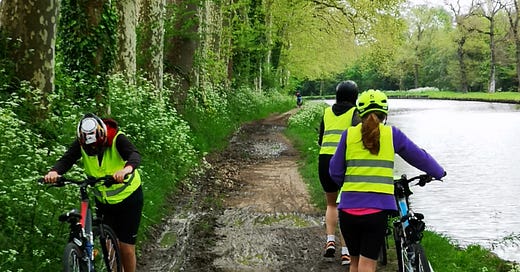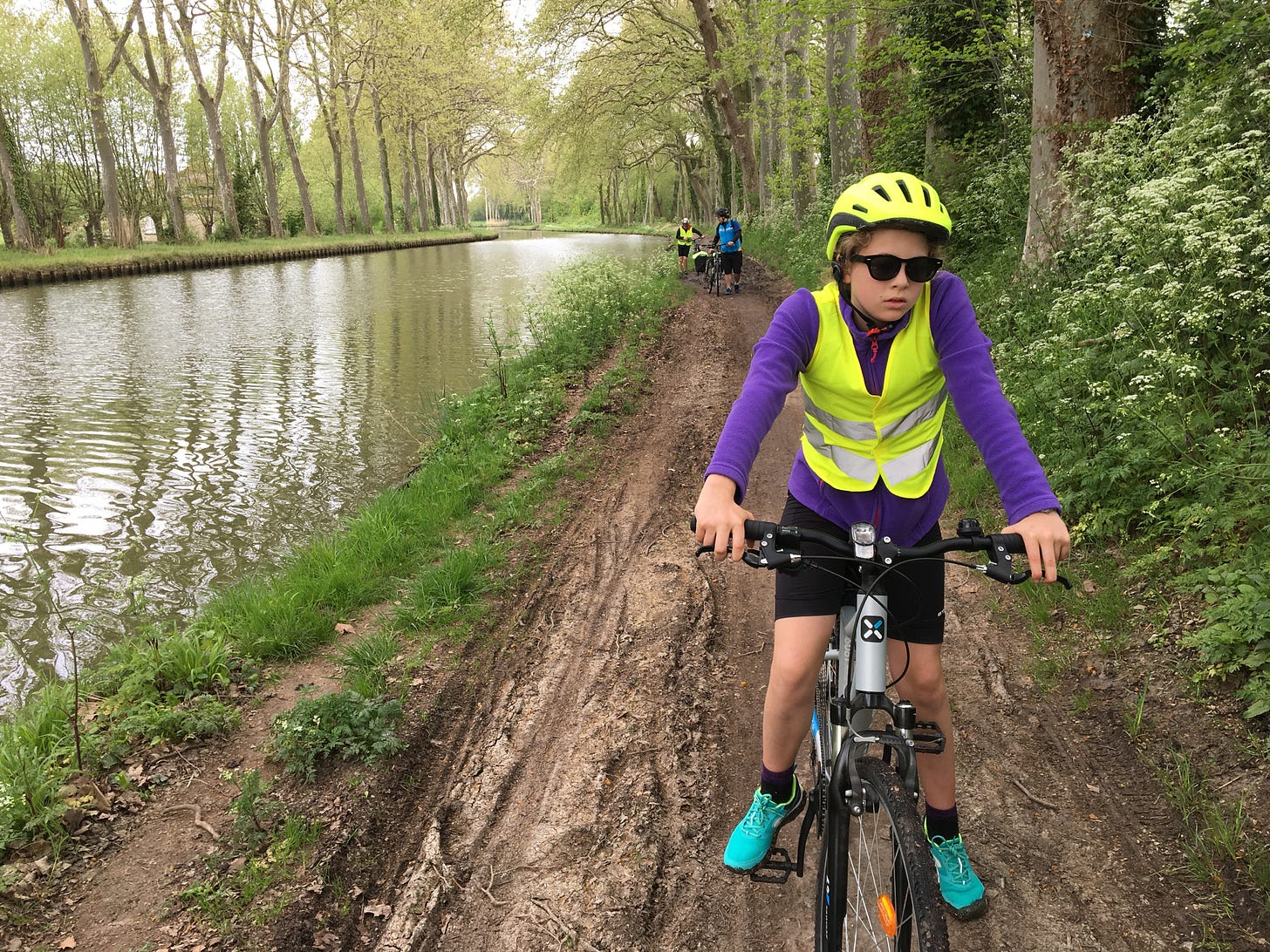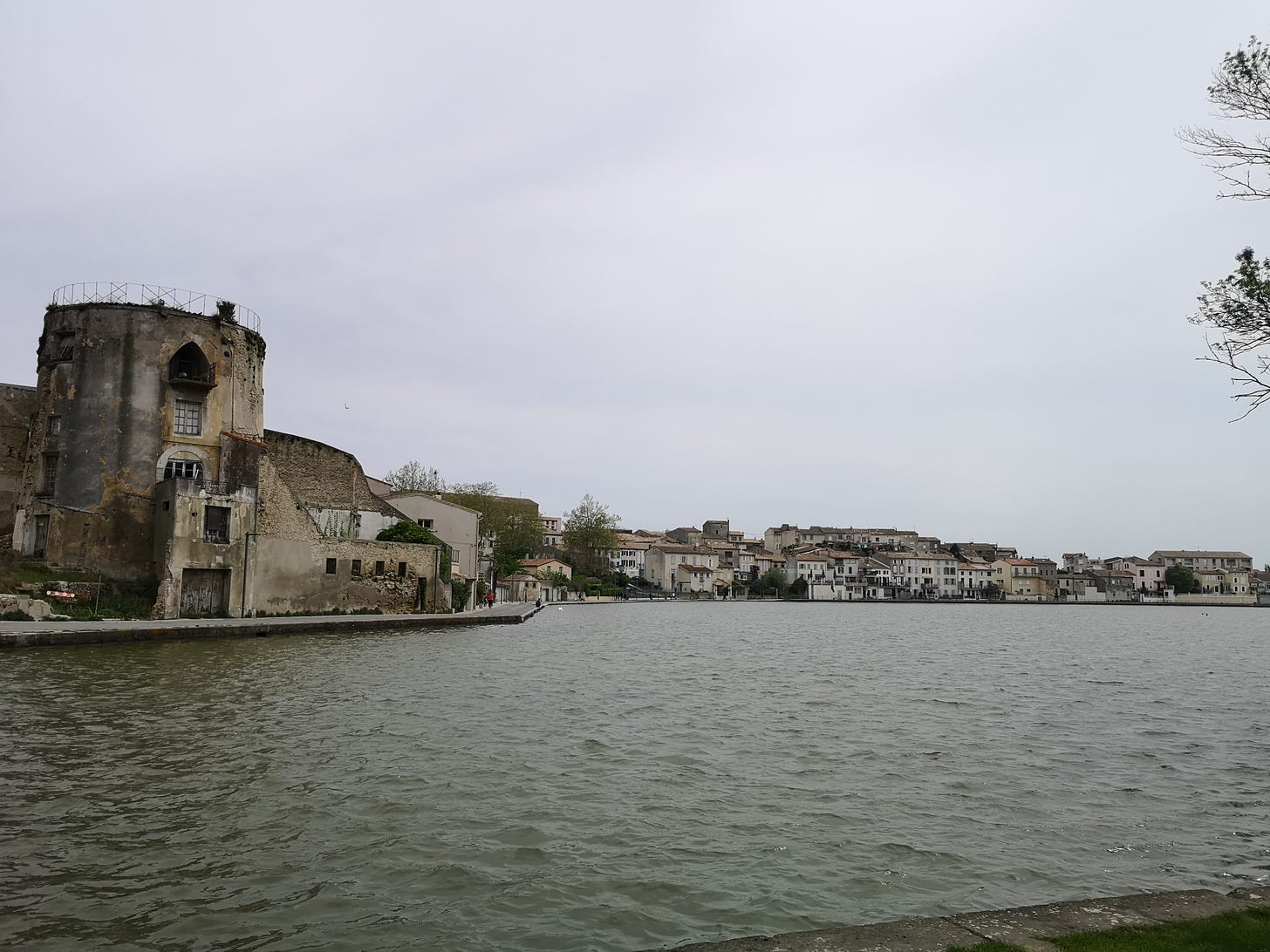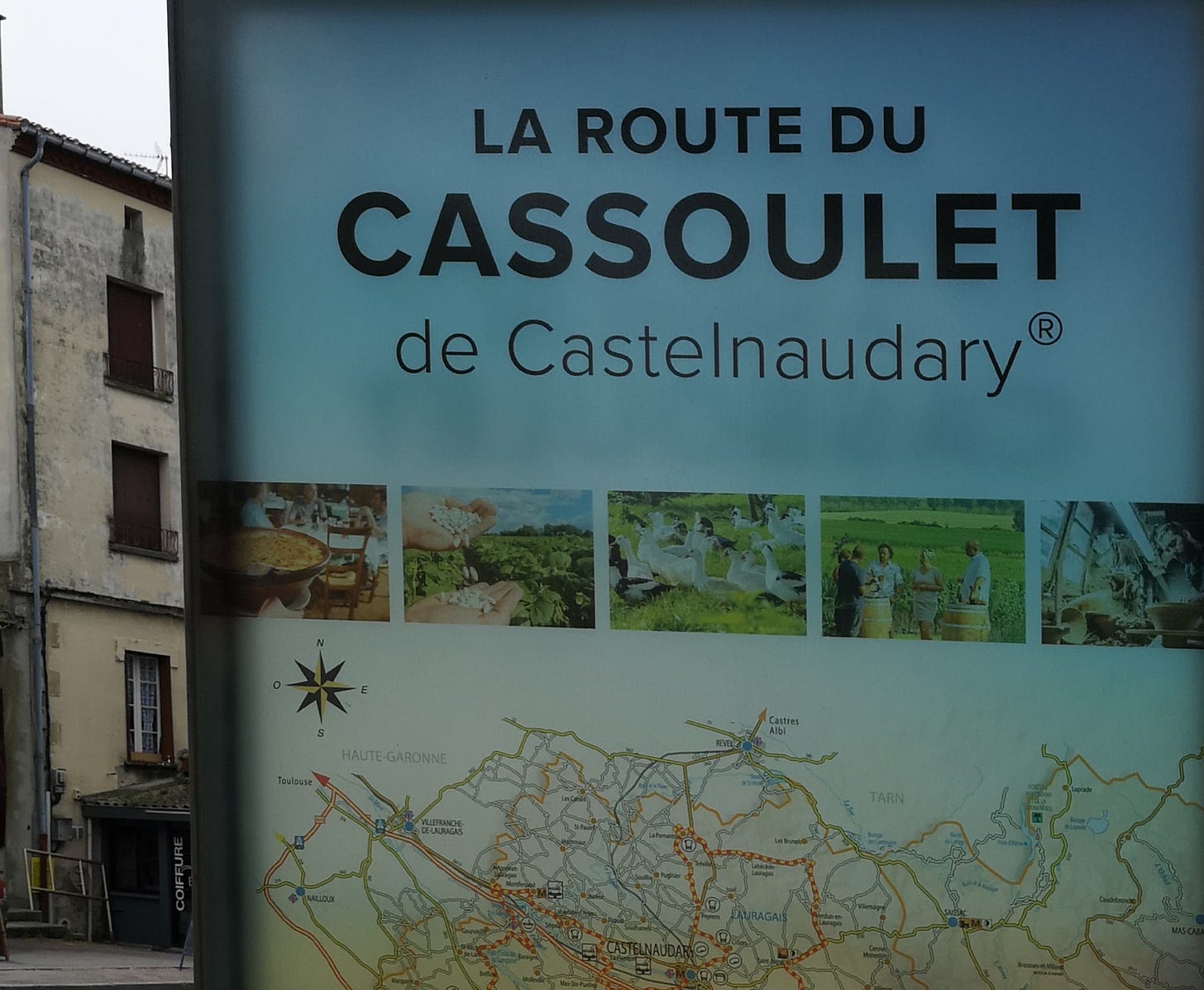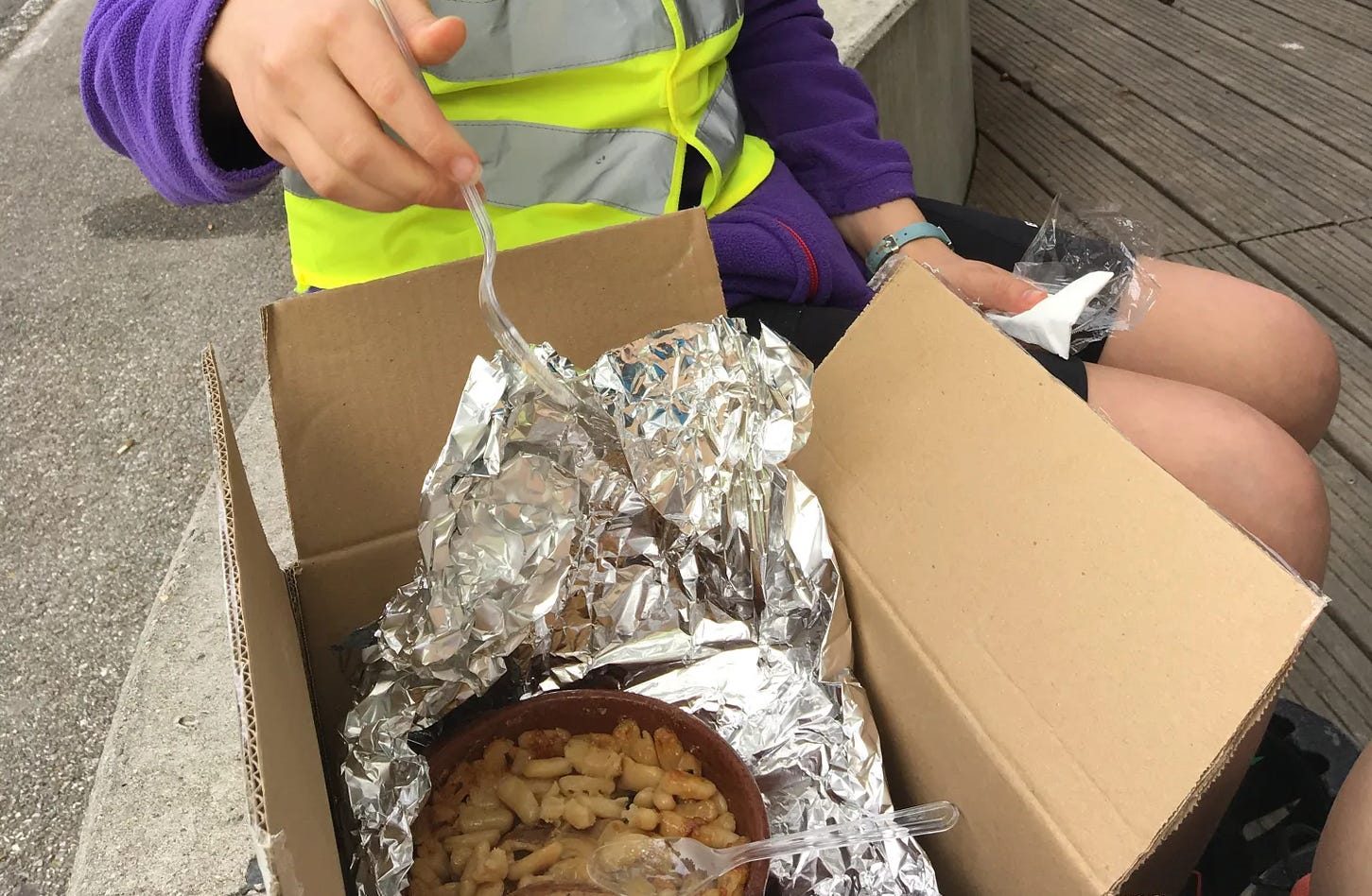Biking The Forgotten Canal Du Midi: Day 2
The riding got rougher as we visited the capital of cassoulet, witnessed the impact of a tree epidemic, and found refuge near a fortress.
We awoke in the Kapadokyato péniche to a rich breakfast of bread with various jams, hot chocolate, coffee served in a gaping bowl without a handle that the French prefer despite its impracticality, and finally granola and yogurt. We feasted below deck around a wooden table so large I tried to divine how they had squeezed it down here. Given the sparseness of our supplies, this meal felt luxurious, even a touch decadent to be sitting in a boat along the canal in a light-filled room. It was a great boost to our reserves of good humor, which were about to be tested.
The plan for Day 2 was, on paper, only slightly less ambitious than Day 1. We would ride 28 miles to Carcassonne, the city of the famed fortress. There would be some gentle climbing to Port Lauragais, Riquet’s high point for the canal, where the path begins a gradual descent that continues almost all the way to the end.
From the start, there were indications that the next stage was going to be rougher. After mounting our bikes and saying our goodbyes, we crossed back over the stone bridge and then found it surprisingly difficult to locate the correct path again. There seemed to be several options of what appeared to be some kind of path running parallel to each other on the right bank. The well-paved path in Toulouse had turned into a sturdy dirt path toward the end of the previous day. Now there were just several narrow dirt tracks with no signs to guide us. We made several false starts, then doubled back, before finally finding the right route.
This correct path soon narrowed to the width of our bike tires. At other times we had to dismount and walk around large muddy puddles, even though it had not rained in several days. Progress was plodding, and our familial camaraderie was showing some slight fractures amid moaning about the conditions.
Cassoulet-ville
We arrived at Castelnaudary around lunchtime with heavy legs and only a quarter of the way toward Carcassonne. Here the canal opens into a wide basin. Castelnaudary was among the biggest economic beneficiaries of the canal, evolving into a major port. Today, that big basin hosts more recreational water pursuits.
The town is best known as the capital of cassoulet, the region’s famed stew of white beans, sausage, and duck.
Riding into the city center, we found a local market set up in a parking lot selling roasted chickens along with fruit and vegetable stands. We stopped at a boulangerie for some bread and nearby found a shop where we bought a portion of cassoulet served in a red clay cassole pot. A heavy mid-day meal may not have been totally wise. But sitting on a bench near the outdoor market, the hearty food reinvigorated us as we tried to resist the temptation to overindulge.
A dangerous amount of inertia and contentment had seized us. Spending a lazy afternoon strolling around town exploring the white-stone façades seemed like a reasonable idea. It required a fair bit of rallying before we managed to climb back onto the bikes. Leaving Castelnaudary behind, we sped past the long basin along a paved bike path. Not far outside of town we were back on more challenging terrain that was still manageable.
Tree Tragedy
We also began to notice the absence of large trees. It is this section that has been most transformed by a disease that has desolated the canal’s famed platanes or platanus acerifolia, a cousin of the American Sycamore tree.
Keep reading with a 7-day free trial
Subscribe to French Crossroads to keep reading this post and get 7 days of free access to the full post archives.

